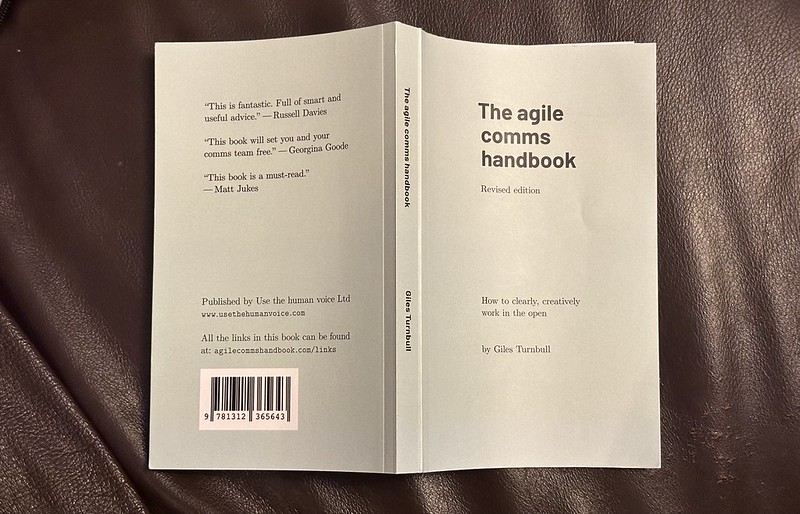Has been a real pleasure to work with Alex over this past term on our Ethics, Sustainability and Business of IoT module. We have had a great mix of people coming in to talk about their experiences and I have been learning each week. The last session was about how to write reports. The assessment for this module is all about writing a business report, so a little different to what the students have produced in the other 7 modules. We had the excellent Giles Turnbull come and share his wisdom from decades of trying to get people communicate more productively.
So what did I learn? Everyone is too busy to read this. So I will jump straight to his 3 tips.
One. Make the smallest possible demand on other people’s time - decide what you are going to delete - you don’t have to tell everything you know. What is the priority. I am now editing this note so have moved all the interesting but not essential information below the fold.
Two. Create layers of content. The lure to grab attention, the context to give the reader just enough information to get the gist, and then the detail. I like the parallels here to advice we give to students when doing literature surveys - first read the search results and filter by titles, then read the abstracts and select those that look relevant and only then read the full paper.
Three. Show how you make your humbugs. Decide what you want to show giving the raw materials for others to talk about your work - work in the open. Some lovely examples from the blog at National Science and Media Museum -
I would recommend you get his book, it’s really good. But if you don’t have the time here is my last thought from what I heard today: “People out there have other things to think about” - people don’t read, they skim, if someone had 30 seconds to flick through your report think what would they learn.
End
Don’t read beyond here
(These are the other bits I also found really interesting in the talk)
The strapline for gov.uk website was “Simpler, clearer, faster” for the first 10 years.
A reminder of the useful the GDS Design principles - Giles worked in the “Making things open, making things better” team
“Writing in here is not like writing out there” academia has a specific user requirement- providing a way to allow others to reference your material.
Lovely example of the Government find a job page - thousands of people employed in providing this service but the page summarises that service into three sentences - and then has a big green button for the action you can take.
Example of layered communication - Skylar Grayson astrophysicist on TikTok - example of layering - 3 min video of her PhD
How to make humbugs - film from pathe:
Bonus tip - don’t share your slides as is - the slides are half the performance, they will not get the whole story - you also need to tell them what you said. Presentations are about presenting.
Doing presentations tips on presentation
Blogs / journals / week notes - allowing others to see what you are doing with the intention of others wanting to come and work with you. A great way to start building a team.
Videos - feelings not facts - different media are useful for different forms of communication
Tactics write less more often Be honest - tell stories of what has worked and was has not (and what you changed as a result) Know your purpose - break down the requests into manageable chunks Use of humour - Parliament funny week notes - make it more interesting by making it funny

